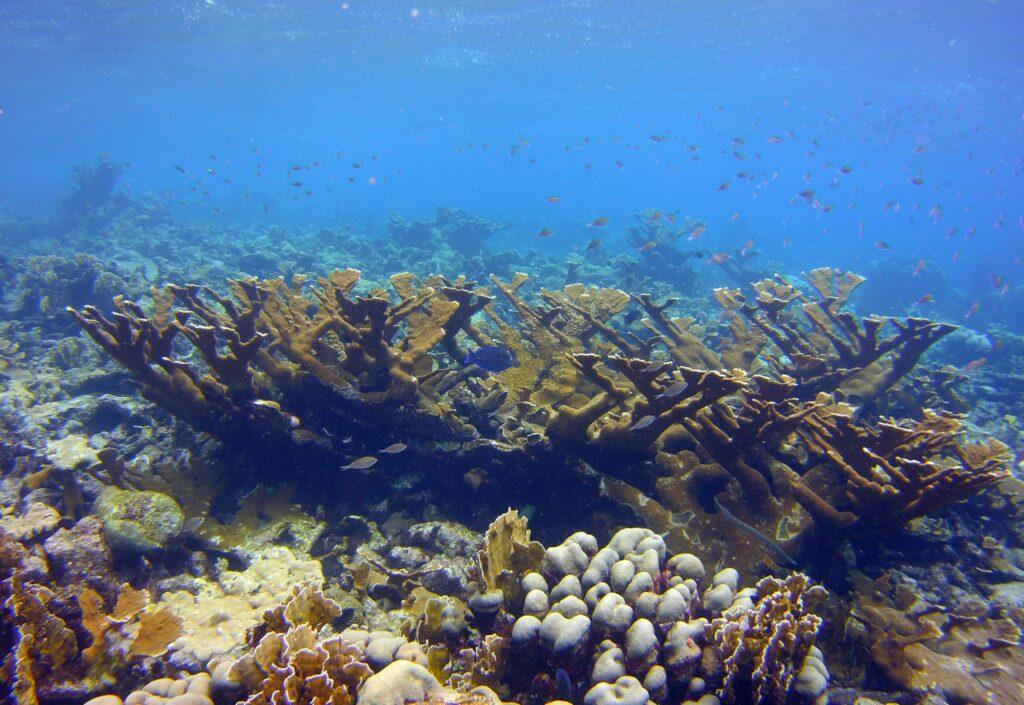Evolutionary Insights: From cancer to corals

Dr Benjamin Werner, Group Leader at Barts Cancer Institute (BCI), Queen Mary University of London, has teamed up with evolutionary ecologists as part of a new research collaboration, funded by a $1 million research grant from the Human Frontier Science Program. By integrating mathematical models of cancer evolution with genetic information of seagrass and corals, the project aims to gain a deeper understanding of the effects of genetic somatic evolution in these different biological systems.
Cancer is an evolutionary process
In the same way that species evolve following the principles of Darwin’s theory of evolution, cancer is also an evolutionary process. As cancer develops over time, the genetic makeup of cancer cells changes due to the accumulation of different errors within their genetic code, called mutations. Not all of these mutations change the properties of cancer cells; however, some of these changes may confer an advantage for the cancer cell, making it more suited to growth in its environment.
Cells that are better adapted to their environment will be favoured and able to replicate, creating more cells with the same mutation. In this way, different populations of cells with different mutations build up, creating tumours that are genetically diverse. This process is called ‘somatic evolution.’
In humans, most somatic mutations are associated with negative effects, such as ageing and diseases like cancer. However, in other biological systems, including plants, somatic evolution may actually be advantageous as it creates genetic diversity that may allow the organism to adapt to its environment.
To gain a more comprehensive understanding of the effects of somatic evolution in different biological systems, theoretical biologist Dr. Werner will be collaborating with plant evolutionary ecologist Professor Thorsten Reusch (Head of Research for Marine Ecology, GEOMAR, Germany) and coral evolutionary ecologist Professor Iliana Baums (The Pennsylvania State University, US) to exchange knowledge between these fields.
Dr. Werner said:
“The field of cancer evolution has adopted many principles and methods originally developed for the evolution of species. I am extremely excited that we have reached a stage, where our insights become useful for the wider community of species evolution in biology.”
The project will run for 3 years and the grant will be split evenly between the three collaborators.
What can we learn from seagrass and corals?
Seagrass and corals can reproduce asexually - they multiply by creating genetic copies or ‘clones’ of themselves, generating a population of individuals that are genetically identical. How these asexual, genetically uniform species have been able to survive for centuries under different and changing environmental conditions has been a long-standing biological mystery, and it is now believed that these species do in fact carry some genetic diversity as a result of somatic evolution.
Professor Reusch said:
“We now know that somatic mutations are rampant in seagrass clones.”
To study the effects of this phenomenon in seagrass and corals, the team will utilise theoretical/computational models that are used to study cancer evolution. By using genetic data from samples of seagrass and corals collected at multiple time points across space, the team will be able to analyse the patterns of mutations that have developed over time.
Such historical data cannot be collected for cancer as tumour samples are analysed in the laboratory after they are large enough to be detected in a patient, and once the tumour is surgically removed it is not possible to study how the cancer will continue to evolve. Therefore, many of the theoretical/computational concepts that have been developed to help understand somatic evolution in cancer are very difficult to test experimentally.
The plethora of genetic data from seagrass and corals available to the team for this project will make it possible to carry out controlled, well designed experiments to test the cancer computational models and develop them further.
Professor Baums added:
“Coral clones are some of the longest-lived animals that we know of and by studying them with new tools developed in cancer biology we are looking to generate new insights into fundamental evolutionary processes.”
The team are interested to see whether the general principles that are used in cancer can be applied to these other biological systems within their natural habitat. By exchanging knowledge from the biomedical field of cancer to that of seagrass and corals, and vice versa, the team hope to gain a more comprehensive understanding of the effects of somatic evolution within each of these systems.
The project is due to start in December 2020, and Dr Werner is now looking to recruit a postdoctoral researcher to work on this project in his laboratory group.
Category: General News, Grants & Awards

No comments yet